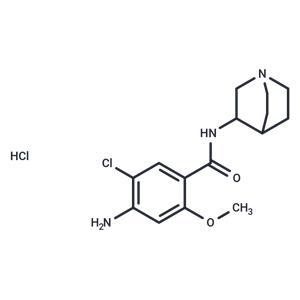
Zacopride hydrochloride NEW
| Price | $38 | $89 | $147 |
| Package | 1mg | 5mg | 10mg |
| Min. Order: | |
| Supply Ability: | 10g |
| Update Time: | 2024-11-19 |
Product Details
| Product Name: Zacopride hydrochloride | CAS No.: 101303-98-4 |
| Purity: 98.32% | Supply Ability: 10g |
| Release date: 2024/11/19 |
Product Introduction
Bioactivity
| Name | Zacopride hydrochloride |
| Description | Zacopride is a highly potent 5-HT3 receptor antagonist (Kd = 0.38 nM) and 5-HT4 receptor agonist (Ki = 373 nM). It also is a selective IK1 channel agonist. |
| Cell Research | In brief, a rat heart was quickly removed and mounted via the aorta on an 80-cm H2O high Langendorff retrograde perfusion apparatus. The heart was perfused first with oxygenated Ca2+-free Tyrode solution (at 37°C) for approximately 7–8 minutes, then with collagenase P (0.1 g/L) Tyrode solution for about 15 minutes. The composition of the Tyrode solution was (in millimoles per liter): NaCl 135, KCl 5.4, CaCl2 1.8, MgCl2 1.0, NaH2PO4 0.33, HEPES 10, glucose 10, pH adjusted to 7.3–7.4 with NaOH. When the tissue was well digested, the left ventricle was separated, minced and filtrated in KB solution with the following composition (in millimoles per liter): KOH 85, L-glutamic acid 50, KCl 30, MgCl2 1.0, KH2PO4 30, glucose 10, taurine 20, HEPES 10, ethylene glycol tetraacetic acid (EGTA), 0.5, pH adjusted to 7.4 with KOH. The isolated myocytes were stored at room temperature (23–25°C) at least 2 hours before use. The cell suspension was then transferred to a chamber mounted on an inverted microscope and superfused with the Tyrode solution. The whole-cell recording was performed with an amplifier Axopatch 200B. When filled with the pipette solution, the electrode resistance was maintained at 2–5 MΩ except for 1–1.5 MΩ for the Na+ current recording. The current signal was filtered at 2 kHz and sampled at 10– 20 kHz. Current was recorded in the voltage clamp mode, and membrane potentials were recorded in the current clamp mode at a frequency of 1.0 Hz. The baseline currents or APs were recorded first, then current values were recorded in the presence of zacopride at different concentrations (0.1, 1.0, 10 μmole/L). Ionic currents were corrected for cell capacitance and expressed in terms of current density (picoamperes/picofarads). All the experiments were conducted at room temperature (23–25°C), except at 36°C for AP recordings. The series resistance was 5.7 ± 2.2 MΩ, and the cell capacitance and pipette series resistance were mostly compensated (usually >70%) [2]. |
| Kinase Assay | [3H] GR113808 binding studies were performed. Membranes were incubated at 37°C for 30 min in 0.5 ml of 50 mM Hepes pH 7.4 buffer, containing 0.1 nM [3H]GR113808, a specific ligand for 5-HT4 receptor, for the competition binding studies and varying concentrations of the radioligand for the saturation studies. Non-specific binding was defined with 30 μM 5-HT. For all binding studies, the incubation was terminated by rapid filtration and washing with ice-cold Hepes buffer through GF/B filters using a Brandel Cell Harvester. Radioactivity of the filter was counted [1]. |
| Animal Research | Aconitine was administered into the exposed vena jugularis in the course of 10 seconds at a dosage of 30 μg/kg (0.046 μmole/kg). Then, 0.2 mL normal saline (NS) or zacopride at a dosage of 25 μg/kg (dissolved in NS, ~0.2 mL) or lidocaine at 7.5 mg/kg (dissolved in NS, ~0.2 mL) were administered immediately into the exposed left femoral vein (n = 8 in each group). In the pilot experiments, 25 μg/kg of zacopride and 7.5 mg/kg of lidocaine showed the optimal antiarrhythmic effects and fewer proarrhythmic side effects. The ECG signals were recorded continuously for a total of 1 hour after the administration of aconitine, and the arrhythmias were evaluated. Various arrhythmic activities, such as DADs, triggered activity (TA), premature ventricular contraction (PVC), ventricular tachycardia (VT), and ventricular fibrillation (VF) were monitored in the observed time window. Parameters of various arrhythmias, such as the episodes and the average duration of each type of arrhythmias, the incidence rate, and the total duration of the arrhythmias among groups, were calculated [2]. |
| In vitro | Zacopride (0.1-10 μmole/L) dose-dependently enhanced the IK1 current in isolated rat cardiomyocytes, had no effects on other ion channels, transporters, or pumps [2]. In Langendorff perfused rat hearts, the antiarrhythmic effect of 1 μmol/L zacopride were reversed by 1 μmol/L BaCl2, a blocker of IK1 channel. In Kir2.x transfected Chinese hamster ovary (CHO) cells, zacopride activated the Kir2.1 homomeric channel but not the Kir2.2 or Kir2.3 channels [3]. |
| In vivo | In all the three treatment modes, zacopride (15 μg/kg) inhibited MI-induced ventricular tachyarrhythmias, as shown by significant decreases in the premature ventricular contraction (PVC) and the duration and incidence of VT or VF [3]. Zacopride enhanced exploratory behaviour and social interaction in the mouse and rat models and antagonized the defensive response in the marmoset, zacopride being 100 times more potent than diazepam [4]. |
| Storage | Powder: -20°C for 3 years | In solvent: -80°C for 1 year | Shipping with blue ice. |
| Solubility Information | DMSO : 60 mg/mL (173.29 mM) |
| Keywords | IK1 | 5-HT Receptor | Serotonin Receptor | Zacopride Hydrochloride | Zacopride hydrochloride | 5-hydroxytryptamine Receptor | Zacopride | Inhibitor | 5-HT4 | ardiac protective | 5-HT3 | antiarrhythmic | inhibit |
| Inhibitors Related | Minoxidil sulfate | Alverine citrate | Dapoxetine hydrochloride | CLOZAPINE N-OXIDE | Amitriptyline hydrochloride | Trazodone hydrochloride | Mianserin hydrochloride | Fluoxetine hydrochloride | Indapamide | Cinchonidine |
| Related Compound Libraries | Bioactive Compound Library | Pain-Related Compound Library | Anti-Neurodegenerative Disease Compound Library | Membrane Protein-targeted Compound Library | Anti-Parkinson's Disease Compound Library | Angiogenesis related Compound Library | Inhibitor Library | Bioactive Compounds Library Max | GPCR Compound Library | Ion Channel Targeted Library |
Company Profile Introduction
Target Molecule Corp. (TargetMol) is a global high-tech enterprise, headquartered in Boston, MA, specializing in chemical and biological research product and service to meet the research needs of global customers.
TargetMol has evolved into one of the biggest global compound library and small molecule suppliers and a customer based on 40+ countries. TargetMol offers over 80 types of compound libraries and a wide range of high-quality research chemicals including inhibitors, activator, natural compounds, peptides, inhibitory antibodies, and novel life-science kits, for laboratory and scientific use. Besides, virtual screening service is also available for customers who would like to conduct the computer-aided drug discovery.
You may like
Recommended supplier
| Product name | Price | Suppliers | Update time | |
|---|---|---|---|---|
| $2500.00/100mg |
VIP1Y
|
TargetMol Chemicals Inc.
|
2024-10-28 | |
| $0.00/1kg |
VIP3Y
|
Wuhan Senwayer Century Chemical Co.,Ltd
|
2022-10-28 | |
| $30.00/1KG |
Wuhan Ruichi Technology Co., Ltd
|
2024-01-03 |
- Since: 2011-01-07
- Address: 36?Washington?Street, Wellesley?Hills
INQUIRY



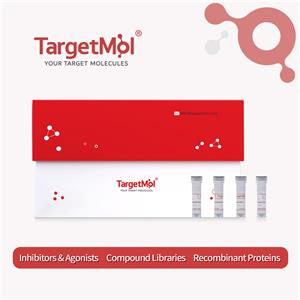
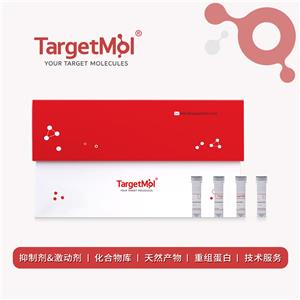
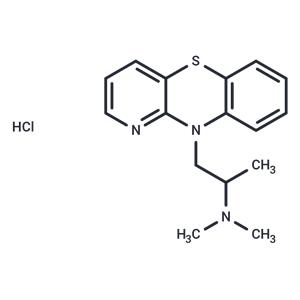
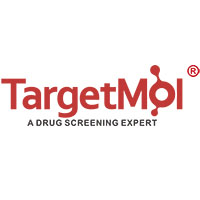
 United States
United States